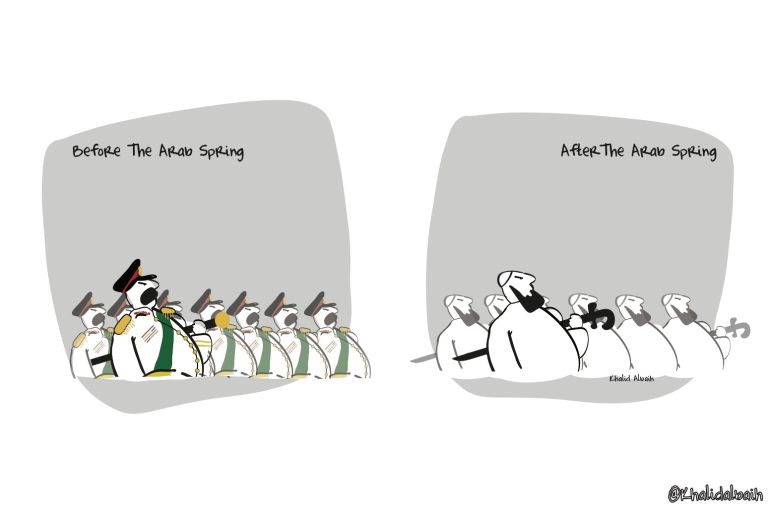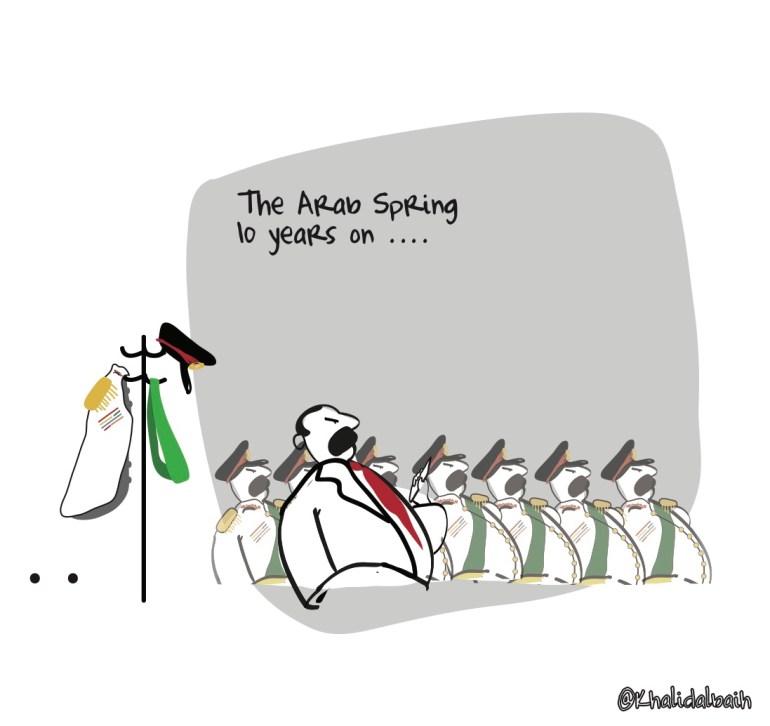Arab Spring Cartoon: Now and Then … and 10 years on
A decade since Khalid Albaih’s cartoons went viral during the Arab uprisings, he revisits some of his most popular pieces from that time.

It has been a decade since young men and women all over the Middle East and North Africa rose up and gave their lives to change the status quo, while their leaders acted mostly like a caricature version of an old, rich, corrupt military dictator.
That made my job as a political cartoonist much easier, but also as dangerous as it can be. Because there is nothing that upsets a dictator who thinks he is intimidating more than someone making him look in the mirror to see how much of a joke he really is; he knows this is what will break the fear “his” people have for him.
Keep reading
list of 2 itemsDrawing controversyThis article will be opened in a new browser window
I drew this original cartoon, Now and Then, during the Arab Spring when I saw a pattern emerging across the region. In every country, what followed the fall of the dictator was almost always the emergence of religious movements – one form of control replacing another.
In the last 10 years, people in the Arab world have continued to fight against both aggressive military regimes and regressive religious ideologies. But, thanks to four years of a Donald Trump presidency in the United States, the increasing normalisation of authoritarianism in the name of stability has numbed the sense of alarm about tyranny in the Middle East, and even spilled over to the rest of the world.
Ten years on, the status quo in the Arab world has only had a change of dress. The rich, corrupt military dictator is now just a (sometimes younger) rich, corrupt, retired military dictator in plain clothes.

Ten years ago, Khalid Albaih’s cartoons about the Arab Spring went viral, some even appearing on walls from Cairo to Beirut. In this series for Al Jazeera, he revisits and reimagines some of his work, reflecting on the difference the last decade has made for people in the Middle East and North Africa.
The views expressed here are the author’s own and do not necessarily reflect Al Jazeera’s editorial stance.
